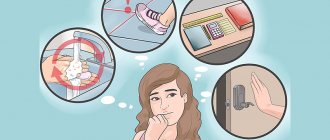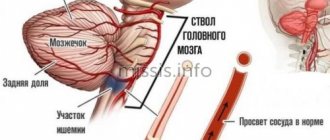Narcissistic personality disorder is a character trait that is expressed in excessive narcissism, as well as inflated self-esteem. A patient with narcissism elevates himself above others. In the vast majority of cases, narcissism and inflated self-esteem are not true.
Until recently, there was no such thing as NRL. Today, the disease has reached colossal proportions. This is all due to errors in upbringing, the presence of mental disorders, permissiveness, and the influence of social networks. A person with a highly inflated ego requires the help of a specialist.
Symptoms of Narcissistic Personality Disorder
A person with signs of narcissistic personality disorder is constantly in a state of euphoria from his “fictional” and “contrived greatness.” The disease manifests itself in an excessive experience of self-importance combined with an increased need for attention.
The modern rhythm of life literally pushes and sometimes “provokes” the activation of narcissism. Social networks provide an ideal platform for demonstrating the disease.
Inflated self-esteem and narcissistic personality disorder are two different concepts. And before we move on to the symptoms of narcissistic personality disorder, we should understand what the difference is between the concepts.
People with high self-esteem praise themselves because of their own successes, achievements, and experiences of acceptance from loved ones. People with narcissistic personality disorder are focused on themselves and their possible achievements due to fear of failure and failure. It should also be noted that people with high self-esteem are prone to worry, sympathy, they are able to accept and help someone else’s grief.
Only a specialist can make a diagnosis. For manifestations of narcissism to be considered pathological, a person must exhibit at least 5 symptoms, out of a possible 9.
- Fantasies about your own success, work done, beauty, strength, amazingness, achievements.
- Feeling important. A person overestimates his importance in the lives of loved ones, and even strangers. It seems to him that his advice and help are constantly needed.
- Belief in your own uniqueness. A patient with NPD is sure that he should communicate only with people from high society.
- The need for love, praise, admiration. If a person lacks attention and admiration, apathy, depression and even aggressive behavior may occur.
- “Everybody owes me.” When communicating with other people, a narcissist will always expect from them either praise or “gratitude” for the fact that he bothered to talk/help/pay attention.
- Exploitation of others. The narcissist will use those around him to achieve his goals. At the same time, he will not feel remorse.
- Lack of empathy, which is accompanied by a reluctance to acknowledge other people's feelings.
- Dislike of other people's achievements and success. Manifestations of envy are often accompanied by aggression and even abuse.
- Demonstrating your own greatness. Arrogant behavior.
The narcissist will constantly live in his own illusion. The patient will demand excessive attention from others, praising “fictitious” successes and qualities that are not inherent in his character.
As the disorder progresses, experts note sudden mood swings, unreasonable aggression, loss of appetite, or, on the contrary, an increase in it. Narcissists rarely complete a task, abandoning it halfway.
Development of the concept of narcissism
The beginnings of the distinction between libidinal and destructive narcissism can be found in the history of the development of the concept of narcissism. From the very beginning, two themes ran in counterpoint to the discussion of clinical narcissism. One is narcissism as a defense against unfavorable object relations; the other is narcissism as a manifestation of fundamental hostility to object relations. Even the original Narcissus myth exists in two versions: one giving a solipsistic account, the other a traumatic explanation. In Ovid's famous retelling, Narcissus pays for the fact that he considers everyone but himself unworthy of his love; but Pausanias knew another version, in which Narcissus lost his twin sister and mistakes his reflection in the pond for this lost sister.
A useful but inaccurate generalization can be made that Freud's line of thought leads us to the concept of libidinal narcissism, while Abraham's ideas, which actually predate Freud's, lead to the concept of destructive narcissism. Freud made it clear that he considered secondary narcissism to be a means of preserving or restoring love when object love seems impossible, whereas Abraham emphasized hostility towards transference objects in narcissistic disorders. Freud described self-love as a substitute for mother-love in narcissistic characters; Abraham believed that envy promotes narcissism and delays object love.
From the very beginning, Abraham associated self-absorption with “negativism.” “The negativism of dementia praecox (schizophrenia) is the very opposite of transference,” he wrote in the first psychoanalytic article on the topic (Abraham, 1908, p. 71). Abraham first noted this in a letter to Freud, with whom he had yet to meet in person. Abraham suggested that, unlike hysteria, “dementia praecox destroys the human capacity for sexual transference, that is, for object love” (Abraham, 1908, p. 69). The term “narcissism” had not yet come into use at that time, and Abraham spoke of autoeroticism. He believed that a person with schizophrenia turns away from all objects of love, returning instead to autoeroticism. Freud was certainly impressed and convinced of the validity of Abraham's theory.
Freud adopted and developed the term narcissism from Paul Nacke and Havelock Ellis, who used it to describe a person who treats his body as a sexual object. Freud's own development of the concept of narcissism began with a footnote he added in 1910 to Three Essays on the Theory of Sexuality (Freud, 1905d) describing narcissistic object relations. Discussing homosexual men, Freud wrote:
“in early childhood [they] experienced a short-term but very intense fixation on a woman (usually their mother), after overcoming which they identify themselves with the woman and choose themselves as their sexual object. That is, out of narcissism, they look for young men like themselves, whom they could love as their mother loved them” (Freud, 1905d, pp. 144–145 fn.).
In the article “On Narcissism,” dating from 1914 (1914c), Freud further develops the idea of this desire for the ideal of mother-infant love. Usually falling in love, in his opinion, drains the ego in favor of the object, whose mutual love is the only means of healing this hemorrhage of the libido. Those unfortunate people whose love is unrequited are deprived not only of the love of another, but also of self-love, and therefore suffer from pain and loss of self-respect. However, secondary narcissism, according to Freud, arises only when there is some obstacle to the fulfillment of object love for internal reasons. He wrote:
“the satisfaction of love is impossible, and the enrichment of the ego can again be ensured only by the withdrawal of libido from objects. The return of the object libido to the ego and its transformation into narcissism represents, as it were, happy love again; on the other hand, it is also true that true happy love corresponds to an original state in which object libido and ego libido are indistinguishable” (Freud, 1914c, pp. 99–100).
Suddenly, in this last sentence, Freud makes us understand that the accomplished libidinal narcissist is in love with himself in the same way that someone can be “in love” with another person. But is this really another person if “happy love corresponds to an original state in which object libido and ego libido are indistinguishable”? Here Freud suggests that this "primordial" - "happy love" - is essentially narcissistic object love, regardless of whether it unfolds with another person in the external world or turns out to be a love affair with the self in the internal world. In both situations, whether the object is external or internal, a positive attitude is determined by the elimination of the difference.
If this is true, the “narcissistic state” is not simply a withdrawal from external objects to an internal object. This is a special type of internal object relation in which the separate existence and intrinsic qualities of the internal object are denied and an internal narcissistic relation is created through projective identification. This sounds like a description of the ideal relationship between the self and the ego-ideal, replacing the relationship between the ego and the superego: inner twin souls united by narcissistic love, which may make the ego's need for that superego love that Freud believed to be redundant a necessary condition of life. Isn't the narcissistic state a deviation from the superego? Do not narcissistic object relations serve as an alternative to the superego's desire for love? And in this case, is it not fear of a hostile Super-Ego or envy of a powerful, impeccable Super-Ego that prompts them? I was convinced of the validity of this assumption by a number of cases, one of which I will describe later in this chapter.
Following Abraham's discussion of narcissism, we find ourselves exploring a theme that will reach its logical conclusion in Rosenfeld's concept of destructive narcissism. In his 1908 article, Abraham associates the shift from object love to autoeroticism in dementia praecox with the negativism of patients. In the following approach to the topic, he suggests that the excessive self-esteem of some patients is accompanied by contempt and hostility towards their love objects. In his article on premature ejaculation (Abraham, 1917), Abraham describes narcissism as a source of sexual resistance: “their object love is very imperfect. Their true love object is themselves. In accordance with Freud's opinion, we find /.../ a particularly high and abnormally emotional evaluation of the penis." Abraham goes further and connects this phallic narcissism with a hostile contempt for women: “he takes revenge on every woman for the disappointments of love to which his mother subjected him in childhood” (ibid., p. 297). In his work on the psychogenesis of melancholia, he describes clinical narcissism as existing in both positive and negative forms: positive when it manifests itself as self-admiration, and negative when it manifests itself as self-denigration (Abraham, 1924).
Two years after his description of phallic narcissism, Abraham writes the first article in which narcissistic disorder is described as a concept with psychoanalytic meaning and confirmed by clinical practice (Abraham, 1919). In this article he discusses a small group of patients who are unable to follow the rules of the psychoanalytic method, although they seem to succeed in doing so (Abraham, 1919, pp. 304–305).
This 1919 article by Abraham became the starting point for Rosenfeld's first major article on narcissistic disorders (Rosenfeld, 1964). It also influenced two important papers published in 1936 linking Abraham's description of narcissistic character disorder to negative therapeutic response. One of them belonged to Joan Riviere, and the other to Karen Horney. Riviere's (1936) article introduces Klein's new theory of the depressive position and manic defense into the previous understanding of negative reactions in analysis, and adds to it the author's concept of “defensive organizations.” Horney (1936) emphasizes the compulsive rivalry of such patients with the analyst, as well as their demand for unconditional love. They need this love to withstand a double anxiety: the anxiety associated with the awareness and expression of their own hostility, as well as the anxiety associated with external retribution.
Rosenfeld took up and developed Horney's description of the patient's reaction to the analyst's work and Riviere's (1936) concept of defensive organizations. He developed his own theory of the "narcissistic organization" in the personality, which is opposed to true object relations and achieves the patient's devotion through seduction, control and tyranny.
Rosenfeld believed that it is important to distinguish between narcissistic states in which the libidinal aspects predominate and those in which the destructive aspects of narcissism predominate. Although in the first, libidinal case, when the narcissistic belief system is damaged, envy, resentment and revenge do flare up, analysis improves understanding and weakens negativism. However, with predominantly destructive narcissism, envy is more intense and less recognized, and an overwhelming desire to destroy the analyst or the self arises. In this destructive case, as Rosenfeld notes, “death is idealized as the solution to all problems” (Rosenfeld, 1987, pp. 106–107).
Hannah Segal notes that she differs from Rosenfeld on the issue of distinguishing between destructive and libidinal narcissism: in her opinion, there is only destructive narcissism. However, she also limits the scope of the term “narcissism” to that force in narcissistic organizations that is fundamentally hostile to object relations: “in narcissism, life-giving relationships and healthy self-love are equally attacked,” she writes. “Envy and narcissism are like two sides of the same coin” (Segal, 1997, pp. 75, 85). Self-love—and, by implication, Freud's description of the “happy love” of narcissistic relationships—Segal categorizes as life instincts, which he considers to be fundamentally object-loving rather than narcissistic. Within the framework of her definition of narcissism as a force directed against object relations in the individual, I completely agree with Segal. But if we talk about narcissistic disorders, I believe that they include a whole range of phenomena - destructive, libidinal, and protective.
John Steiner covers them with his broader concept of “pathological organizations”: in his opinion, defenses in them are combined with destructive and libidinal narcissistic forces (Steiner, 1987). Understanding that narcissistic systems are inevitably driven by mixed motives, he does not consider it necessary to separate them (personal communication with J. Steiner). Nevertheless, in my opinion, whatever the set of motives and however varied, at any given moment the main motive is either libidinal/protective or hostile/destructive. The formation of narcissistic object relations may be motivated by the desire to preserve the capacity for love by giving the love object a semblance of self, or it may be aimed at the annihilation of the object as a representative of otherness. Aggression can be generated either by predominantly defensive or predominantly destructive narcissism. But there is a difference between the struggle to hold on to love and the unbridled violence of hostility towards objects. In the public sphere, war may be defensive, and patriotic aggression may be love misdirected, but genocide never is: it is caused by the desire to annihilate otherness, emanating from the xenocidal impulse.
To illustrate my understanding of this distinction, I will briefly describe two patients. The first I would call suffering from a predominantly destructive narcissistic disorder, the second from a predominantly libidinal narcissistic disorder. What they have in common is the generation, through projective identification, of narcissistic relationships with the Ego-ideal in order to avoid relationships with the destructive, parental Super-Ego. Moreover, in the first case, destructiveness is translated into a relationship between twins, which then becomes a deadly alliance; on the other hand, in the second case, destructiveness becomes a mental refuge, where the original “happy love” is sought in mutual understanding.
Signs of Narcissistic Personality Disorder
According to the observations of psychiatrists and psychologists, NPD occurs equally often in representatives of the stronger and weaker sex at the age of 16-40 years. Often, parents confuse narcissism with an inflated opinion of their talents.
Nowadays, many people suffer from narcissism to one degree or another. As noted above, social media is to blame. Narcissism can also develop against the background of mental trauma received at a young age and mental disorders.
It is already known for sure that narcissism is a disease that can be characterized by exceptional narcissism and uniqueness. In this regard, the patient expects special treatment, because according to his own convictions he is superior to those around him.
Signs of narcissism:
- Creating a “fake picture”. The narcissist creates a picture of another person in his head, both externally and internally. A person tries to look smarter, more developed and more beautiful compared to others. On social networks, the narcissist posts only the best photos. Moreover, he does not edit or process images, considering himself a person with an ideal appearance. The narcissist is obsessed with one desire - to surprise others by showing his ideal life.
- Bombast. The behavior of a king is how one can characterize the manner of communication of a person with the habits of a narcissist. He tries to stand out by any means: clothing, speech, manner of communication.
- Humiliation of other people. In moments of bad mood or loss of strength, the narcissist experiences a feeling of dissatisfaction. Against this background, a desire arises to humiliate another person. Aggression also occurs when a person with narcissistic personality disorder meets a better person (according to his own beliefs). If someone is better than a narcissist, he experiences strong and painful emotions, which later develop into aggression.
- Fear of showing emotions. Naturally, the fear of showing emotions is inherent not only in narcissists, but also in people who are not confident in themselves. Tears, feelings of pity, manifestations of tender feelings - this is not about narcissists. Internally, they understand their weakness, so they are afraid to show their emotions.
- Inability to listen. The ability to listen involves participation in dialogue, sympathy, and empathy. But narcissists lack these feelings. They find it difficult to concentrate for long periods of time. They interrupt others. Sometimes, even in a very harsh form.
- Exaggerating one's own achievements. Any book read will be accompanied by a revaluation of work. However, like any, the most insignificant action and work.
- Blaming others. Self-criticism is not typical for patients with narcissistic personality disorder. Any failures will be accompanied by accusations towards relatives, friends and ordinary acquaintances.
- Obsession with power and success. Success for narcissists is purely an external gloss. They do not work on themselves, their internal qualities, and, as noted above, they rarely bring things to a logical conclusion. Power for them is just an end in itself, and not the result of long work on oneself.
Some signs of narcissistic personality disorder are present to varying degrees in the average person. To make a diagnosis, you should visit a specialist's office.
Mrs. L: twin self versus crone
I would like to give a short example from the supervision of the analysis of Mrs. L., a narcissistic patient. Dr. A was particularly eager for this supervision because, although the analysis had just begun, she was already experiencing significant difficulties. Dr. A is a conscientious and skilled analyst with experience in analyzing disturbed and difficult patients; she could not understand her inability to establish and maintain an analytic setting with this patient.
Dr. A described a series of uncharacteristic mistakes that resulted in her confessing to a patient something she had not intended to confess and immediately regretting. Therefore, she felt that the analysis was out of her control. Mrs. L., an attractive young woman, came to the analyst after the upsetting end of a relationship with a man. Her history also included adolescent disorders and episodes of anorexia. She left the city in which she lived with her ex-man and returned to another, where her wealthy father lived with his second wife and where she was to undergo analysis. Everything was agreed upon, but when workers came to arrange the move on the day of her departure, she refused their services and missed her plane.
Having arrived at her new home and having arranged for the analysis to begin, she missed the first session. She called and explained that she had lost the number for the analyst's office. Dr. A, feeling the need to establish her analytic position and method of work from the outset, was “determined” to discuss the issue of payment for a missed session. The alarming signal for the analyst was the inexplicable loss of “firm determination” and some other points. When Mrs. L, who was due to pay for the missed session by check at the end of the month, did not do so, Dr. A, to her chagrin, was unable to bring it to his attention. Following this session, the patient, by any standards very wealthy, called Dr. A. to say that she could not continue the analysis because she could not afford it. Dr. A suggested that the patient come to the next session on time and they could discuss this issue. The patient agreed, and then in the session, Dr. A., to her horror and despair, found herself drawn into further fruitless conversation with the patient. The patient arrived twenty minutes early for the next session, which introduced some confusion into the process.
During this session, Mrs. L. lay restlessly on the couch, constantly fidgeted and got up several times, either for sweets or for napkins. What bothered the analyst most, however, was her own behavior. In this session, she surprised herself by agreeing to reduce the fee for this patient. The feeling that her countertransference was out of control was further intensified when, instead of addressing the issue in self-analysis in preparation for the next session, she inadvertently prolonged the current session—something that rarely happened to her. However, it was in this session that the patient reported a dream that shed some light on these events.
“I had a very strange dream,” said Mrs. L. “I was in a house - this strange house - in each series of dreams I see recurring dreams about a new house. This one was new - but the sensory experience tells me that I was here a hundred years ago. Next to me is another person who was my lover - or sister - or brother, not sure what gender this person was. I was neither a man nor a woman - or I was both a man and a woman. I was protecting this other person - we lived together with the old lady - we conspired to kill her. This somehow involved stairs and something written, something like a letter. Apparently we gave her the letter without her seeing it, which led to her death. For our own sake, we needed to do this. But six or seven years later we were arrested. I know it was me in the dream - I don't usually lie (she lies all the time, the analyst added) - I remember thinking that this was the first time - they won't expose me, they won't find out that we committed murder. If she, the old woman, knew, she would take revenge. She was such an evil old woman - a destructive force. This was not a murder out of malice, but a matter of life and death for me. The reason was this internal struggle. I felt a taste in my mouth like a huge piece of chewing gum - it was cannibalism - like chewing tasteless meat."
“When I woke up this morning, I felt sick,” the patient continued. “Finally I threw up.” The patient herself recognized her mother in the evil old woman.
There is certainly a lot going on in this dream, and it is tempting to explore themes such as cannibalism and oral sadism. But I believe that the best way to use this dream is to explain what was actually happening in the analysis and what light it might throw on the problem of repeated enactments. I suggested that Dr. A is represented in the dream both as a “twin soul/lover” and as an evil old woman - then the recent events make sense. Dr. A's unconscious countertransference identification with the patient is represented in the dream by the patient's “twin soul.” The twin souls' plot to kill the "mean old lady" could then be seen as an unconscious conspiracy between patient and analyst to destroy Dr. A's professional self. Several minor murders had already occurred that seemed justified to the twin souls because they believed they were under threat of being fed poisoned meat through the mysterious practices of psychoanalysis.
The analyst regained her usual analytic position and lost it only from time to time when the patient dramatically introduced some unexpected complication into the analysis. A stereotypical pattern emerged in which progress was followed by negative therapeutic reactions. As the analysis progressed, the full extent of the patient's impairment became more apparent. She had problems with drugs, and episodes of bulimia and vomiting had been recurring for a long time. The patient's unfolding history and transference pointed to her bisexuality. In particular, periods of oscillation were observed between the homosexual erotic transference and the negative, paranoid transference.
I would like to emphasize my point - that the narcissistic object relationship developed by this patient, the "twin soul" relationship, was a conspiracy formed to counter the murderous superego represented by the "old woman." However, the destructiveness turned into a narcissistic relationship. The purpose of the libidinal connection, expressed in the erotic transference, was to create an alliance whose goal was murder. A dream that the patient had a year and a half after the events described shed more light on this complex narcissistic organization.
Mrs. L is spoon-feeding her baby - her mother is in the room - Mrs L is not sure whose baby it is. During feeding, the spoon becomes a fork, which tears pieces of skin from the baby's lips, and he then eats these pieces. The patient turns to her mother for help. The mother says: “Do it this way,” and tears a larger piece from the child’s mouth, saying: “This is what he eats.”
Mrs. L counters that there must be another way to stop the child from eating himself. The child's lips are very red and tightly clenched, looking like genitals. The patient then realizes that it is not her mother, but X, her former lover, and they are not feeding the child, but having sex.
“In real life,” the patient noted, “I had homosexual sexual relations with X.” “X,” she continued, “had the perfect body, I adored him. When I say “ideal,” this is what I mean: this is the body I imagine my father would want a woman to have.”
“We were in college together,” Ms. L added. “It reminded me that at the time I had a recurring masturbatory fantasy: watching a man in steel-toed boots kicking a woman’s genitals, until her clitoris falls off.”
“When I was little, I thought that a woman gets pregnant because she swallows something big and round.”
“The food that comes into us is good, but it comes out as crap. “I saw another dream,” she said, “in which shit covered everything, you couldn’t see anything behind the shit; It was impossible to get anywhere, everything was covered in shit.”
What goes inside may be good, but when it comes out again, it's crap covering everything. I cannot imagine a better description of how the analyst experienced the sessions. Again and again I see a pattern here in which the session begins clearly and clearly, leading to straightforward interpretations and a positive response from the patient. Then it all gets lost in a welter of disconcerting and confusing information from the patient.
This analysis and dream have many aspects. But for now I would like to focus on the patient's sexual relationship with her ego ideal, represented by X, which was constructed from the patient's own ego ideal - that is, a woman with exactly the body that her father would want. Thus X usurps the place of the mother in the primary scene, and the patient takes the place of the father with X. Thus, an idyllic, illusory, narcissistic homosexual primary scene is built and played out. However, this is associated with a sadistic masturbatory fantasy of intercourse that has surfaced in the memory, which is similar to the scene of feeding a child in a dream with the same replacement of satisfaction with mutilation. So in this case, the supposedly protective withdrawal from the frightening relationship with the deadly nursing figure into an autoerotic genital fantasy entails the same destructive elements. The cannibalistic fork-breast that feeds the child itself becomes a steel-clad penis that castrates the female genitals.
Treatment for Narcissistic Personality Disorder
People with narcissistic personality disorder overwhelmingly deny the need for treatment. And in the case when they are satisfied with life: career advancement, satisfaction of their own ambitions, admiration from others - they really feel great.
The treatment process for narcissistic personality disorder should never be rushed. Forced treatment can only worsen the patient's condition. In this case, a special individual approach is needed. No self-treatment at home. Qualified professionals should work closely with narcissists.
Today, the main treatment method for narcissistic personality disorder is psychotherapy. In this case, the therapist pursues a single goal - to convey to the patient that people must be accepted as they are.
Treatment for narcissistic personality disorder is individual. When choosing treatment methods, you should consider:
- General physical and mental condition of the patient.
- Desire to make contact.
- Patient's age.
- Social status.
- Presence of mental disorders.
One of the most successful and progressive methods of treating the disease is the psychoanalytic approach. The psychoanalytic approach allows us to identify pathological patterns at a young age.
***
I believe that both patients had catastrophic ego-relationships - but with some differences. In Mrs. L., the first patient, the superego figure was a murderous woman; for Mrs. D, this place was usually occupied by an internal parent who seemed to be an emptiness - not just an absence, but a negating presence. They both avoided a relationship with the Super-Ego by forming an attachment to the Ego-ideal, which created a narcissistic organization. This was realized externally in relations with an idealized double. In the first patient, perverse, sadomasochistic relationships arose; in the second, the authority of the superego's judgments was invested in the narcissistic object, whose approval thus became a matter of life and death. I think that narcissistic object relations in the first case led to something like the infamous Bonnie and Clyde couple, and in the second to something like Romeo and Juliet. Death lurks in both scenarios, but in one the partnership is based on a shared love of killing, and in the other, death is preferred to life without the love of the other.
The backgrounds of both patients are similar. Both of their parents divorced; Both mothers found it difficult to perform maternal functions; both had successful fathers who were ruthlessly self-centered. However, these unfavorable parental traits were much more pronounced in the parents of a patient with a predominantly libidinal disorder, Mrs. D. Her own disturbances were significantly less severe and less narcissistic than those of either of her parents. Ms. L., who suffered from a predominantly destructive narcissistic disorder, on the contrary, was significantly more severe than that of either of her parents. In her case, we can note a worsening of the situation in the next generation, and in the case of Mrs. D., on the contrary, an improvement in the situation.
How to treat narcissistic personality disorder:
- Behavioral and cognitive psychotherapy.
- Group classes with relatives.
- Drug therapy.
The problem is aggravated if, against the background of a pre-existing disease, symptoms of prolonged depression, phobias and panic attacks appear. In this case, we should talk not only about psychotherapy, but also about supporting the body with medications that are prescribed after the examination.
Quite often, patients are prescribed alimemazine antipsychotics. The latter have a multifaceted effect on the patient’s body. The main properties of the drug include a mild sedative effect, which is accompanied by a decrease in the reaction to external stimuli. Alimemazine antipsychotics reduce feelings of fear, panic, suppress signs of aggression, and even hallucinations.
It is important to note that after a course of taking modern antipsychotics, patients do not become addicted. They have a very gentle effect on the human body, causing virtually no side effects.
Taking antidepressants, antipsychotics, and herbal medicine can alleviate the narcissist’s condition, but it should be understood that an important part of the effectiveness of treatment directly depends on sessions with a psychologist and the supervision of a psychiatrist.
To move narcissism “from its place”, only one thing is necessary - a person’s desire to admit that he needs the help of a specialist. At the Salvation clinic, all services are provided on an anonymous basis. This means that after treatment, the patient’s reputation will remain “clean”.
Experts are sure that NPD begins in childhood. Narcissism is inherent in every child in a healthy, refined form. Correcting narcissism is not always treatable. In some cases, it may take more than one month to restore normal behavior.
Psychologists and psychiatrists advise engaging in preventive work from an early age. Under no circumstances should a child suffer from a lack of love and attention, but you should not allow your child to manipulate you.
Preventive work to eliminate manifestations of NPD is primarily aimed at developing empathy, as well as the formation of high and “healthy” self-esteem. Preventive work can be carried out in the form of a game, starting from 3 years.
Symptoms of BPD
The first signs of the disorder usually appear in adolescence; over the years, disease statistics decrease and in almost 50% of patients the condition improves within ten years after the first symptoms appear. There are almost three times more cases of disease among women than among men.
The cornerstone of the disease is an unstable emotional state, the impetus for which was an excessive reaction to external events and inhibition of return to the previous emotional state. Susceptibility to such impulsive transitions is observed among those who are prone to sudden changes in evaluating people, from idealization to disappointment. Patients with this disorder have extremely intense sensitivity, they can be overwhelmed with love, joy, they can experience unprecedented elation, but at the same time they are also overwhelmed by negative emotions: anger and anxiety, fear and guilt. The intensity of emotions is so great that a substitution of reactions occurs: patients grieve greatly instead of the usual sadness, feel shame and humiliation instead of awkwardness, panic instead of a little excitement, reach the point of insanity instead of indignation.
With borderline disorder, the threshold of sensitivity to unsuccessful developments of events and to receiving refusal is high. Trying to avoid strong negative emotions, people suffering from BPD harm themselves and hide their feelings. The inability to control one's reactions sometimes leads to suicide. Despite short-term feelings of elation and light fun, the patient most intensely manifests anger and dejection, rage and loss, alternating anxious and depressive moods.
Impulsive behavior
(abuse of alcohol and/or psychotropic substances, excessive consumption of food or eating disorders, uncontrolled spending of money, promiscuous sexual relations, dangerous driving, sudden dismissal, sudden end of a relationship) reflects impulsive emotions - this is how a person strives to get rid of the strongest mental pain and the problems that cause it. But after some time, pain comes from repentance, a feeling of guilt for one’s action and, as a response, a desire for a new impulsive act in order to alleviate the new pain. Over time, this behavior in some cases becomes an automatic reaction to the pain of a negative emotion.
Self-harm
is one of the main symptoms of borderline disorder and is present in 80% of cases. The most common type of cut is made to the body. Also included are bites, varying degrees of burns, bruising, and head-banging. It is worth noting that up to 70% of patients cause physical harm to themselves without the intention of committing suicide. Self-harm here acts more as a way to punish oneself or to distract from the pain caused by a negative emotion. This is an attempt to evoke ordinary feelings in a situation of withdrawal from social fulfillment and can be an expression of anger or anger at difficult life circumstances.
The risk of suicide in BPD is up to 10%.
There is proven evidence that men are at greater risk (twice as high) of committing suicide than women. Suicidal tendencies and suicide attempts in patients with borderline disorder may indicate their belief that by doing so they will make life easier for others, that everyone will feel better. Such patients are especially sensitive to how people treat them: they are overly happy and grateful for good treatment and, conversely, are overly sad or angry when they are offended or criticized. The range of feelings is vast and their change occurs very quickly. Sometimes the mere possibility that the right person may disappear from life or that one may lose his respect is enough, and the pendulum of feelings swings from love to hate, from reverence to disappointment. Such sentiments harm not only specific relationships, they affect relationships in the family, in society, and on self-esteem.
With borderline disorder, there is a tendency to perceive the world as a dangerous place full of malicious people. At the same time, there is boundless devotion in romantic relationships, based on fear. This is facilitated by dissatisfaction with the partner, conflicts in the family and physical violence, chronic stress, and unwanted pregnancies. To protect itself from intense emotions caused by painful life events, the mind shifts its attention away from those events or memories of them. Blocking negative emotions temporarily alleviates impulsive feelings, but at the same time dulls ordinary emotions, causing a person with borderline disorder to lose the ability to concentrate and react naturally in everyday life, which significantly complicates his position in society.










